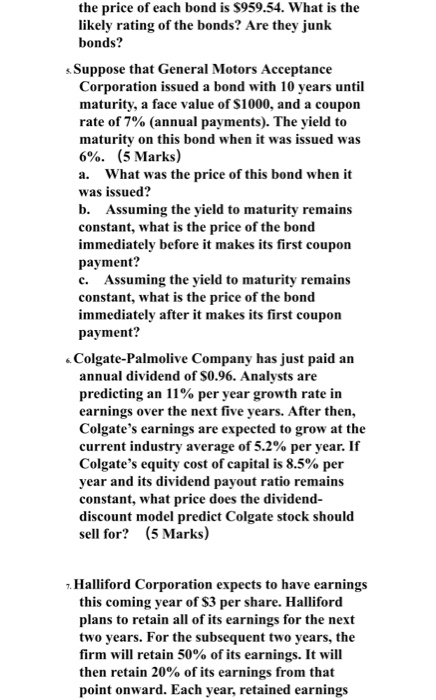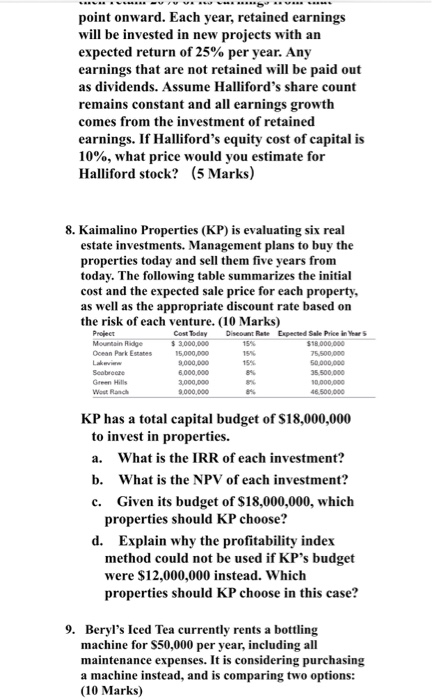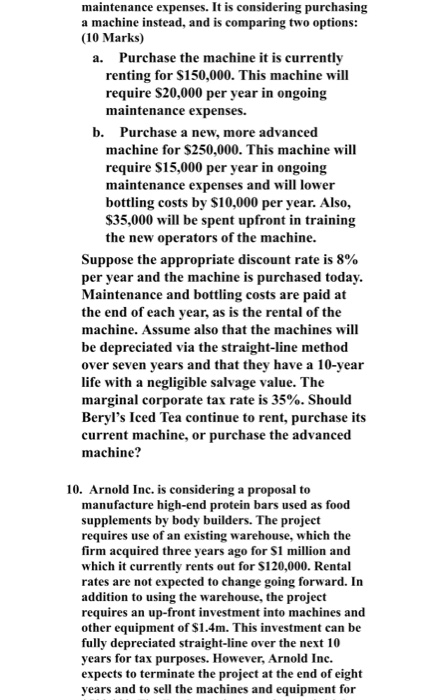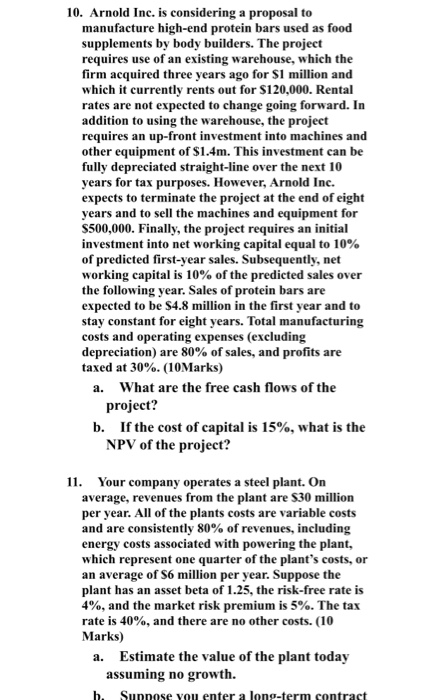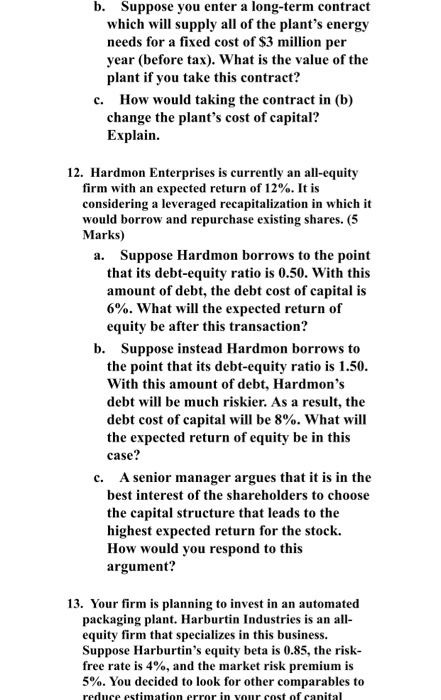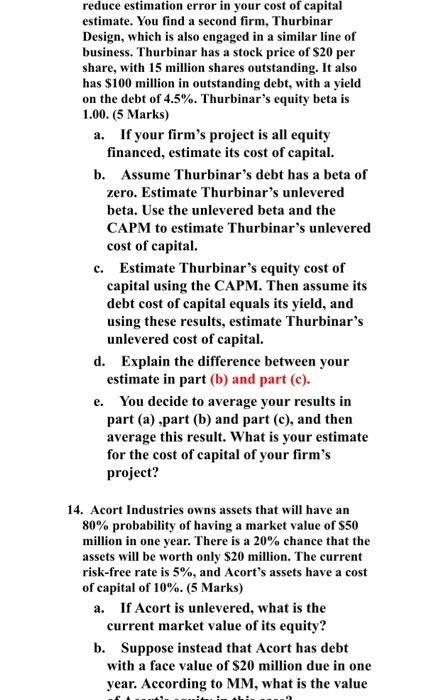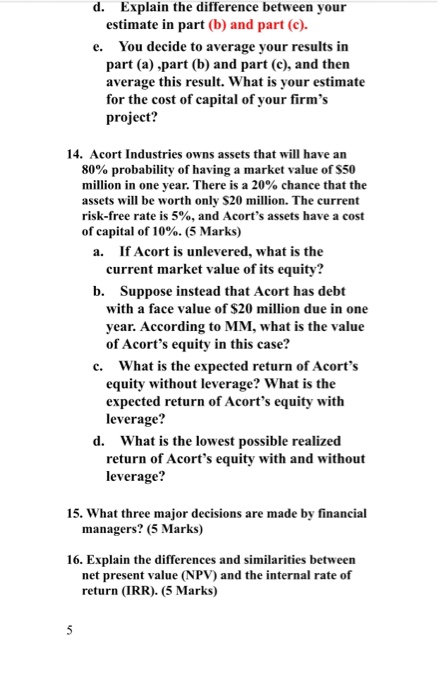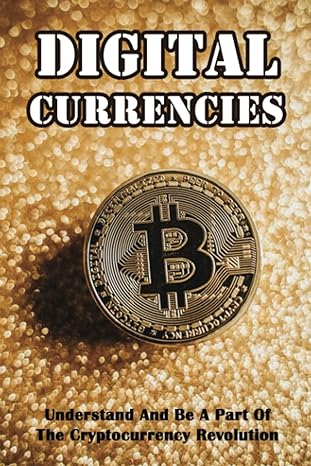When you purchased your house, you took out a 30-year annual-payment mortgage with an interest rate of 6% per year. The annual payment on the mortgage is $12,000. You have just made a payment and have now decided to pay the mortgage off by repaying the outstanding balance. What is the payoff amount if: (5 Marks) a. You have lived in the house for 12 years (so there are 18 years left on the mortgage)? b. You have lived in the house for 20 years (so there are 10 years left on the mortgage)? c. You have lived in the house for 12 years (so there are 18 years left on the mortgage) and you decide to pay off the mortgage immediately before the twelfth payment is due? 2. You have just turned 30 years old, have just received your MBA, and have accepted your first job. Now you must decide how much money to put into your retirement plan. The plan works as follows: Every dollar in the plan earns 7% per year. You cannot make withdrawals until you retire on your sixty- fifth birthday. After that point, you can make withdrawals as you see fit. You decide that you will plan to live to 100 and work until you turn 65. You estimate that to live comfortably in retirement, you will need $100,000 per year starting at the end of the first year of retirement and ending on your 100th birthday. You will contribute the same amount to the plan at the end of every year that you work. How much do you need to contribute each year to fund your retirement? (5 Marks) You are thinking of making an investment in a new plant. The plant will generate revenues of $1 million per year for as long as you maintain it. You expect that the maintenance cost will start at $50,000 per year and will increase 5% per year thereafter. Assume that all revenue and maintenance costs occur at the end of the year. You intend to run the plant as long as it continues to make a positive cash flow (as long as the cash generated by the plant exceeds the maintenance costs). The plant can be built and become operational immediately. If the plant costs $10 million to build, and the interest rate is 6% per year, should you invest in the plant? (5 Marks) 4. HMK Enterprises would like to raise $10 million to invest in capital expenditures. The company plans to issue five-year bonds with a face value of $1000 and a coupon rate of 6.5% (annual payments). The following table summarizes the yield to maturity for five-year (annual-pay) coupon corporate bonds of various ratings: (5 Marks) RatingAAAAA ABB 6.90% 250% a. Assuming the bonds will be rated AA, what will the price of the bonds be? b. How much total principal amount of these bonds must HMK issue to raise $10 million today, assuming the bonds are AA rated? (Because HMK cannot issue a fraction of a bond, assume that all fractions are rounded to the nearest whole number.) c. What must the rating of the bonds be for them to sell at par? d. Suppose that when the bonds are issued, the price of each bond is $959.54. What is the the price of each bond is $959.54. What is the likely rating of the bonds? Are they junk bonds? Suppose that General Motors Acceptance Corporation issued a bond with 10 years until maturity, a face value of $1000, and a coupon rate of 7% (annual payments). The yield to maturity on this bond when it was issued was 6%. (5 Marks) was issued? b. Assuming the yield to maturity remains constant, what is the price of the bond immediately before it makes its first coupon payment? c. Assuming the yield to maturity remains constant, what is the price of the bond immediately after it makes its first coupon payment? Colgate-Palmolive Company has just paid an annual dividend of $0.96. Analysts are predicting an 11% per year growth rate in earnings over the next five years. After then, Colgate's earnings are expected to grow at the current industry average of 5.2% per year. If Colgate's equity cost of capital is 8.5% per year and its dividend payout ratio remains constant, what price does the dividend- discount model predict Colgate stock should sell for? (5 Marks) 7. Halliford Corporation expects to have earnings this coming year of $3 per share. Halliford plans to retain all of its earnings for the next two years. For the subsequent two years, the firm will retain 50% of its earnings. It will then retain 20% of its earnings from that point onward. Each year, retained earnings point onward. Each year, retained earnings will be invested in new projects with an expected return of 25% per year. Any earnings that are not retained will be paid out as dividends. Assume Halliford's share count remains constant and all earnings growth comes from the investment of retained earnings. If Halliford's equity cost of capital is 10%, what price would you estimate for Halliford stock? (5 Marks) 8. Kaimalino Properties (KP) is evaluating six real estate investments. Management plans to buy the properties today and sell them five years from today. The following table summarizes the initial cost and the expected sale price for each property, as well as the appropriate discount rate based on the risk of each venture. (10 Marks) Projet Cost Today Discount Rate Expected Sale Price in Year 5 Mountain Ridge $3,000,000 $18.000.000 Ocean Pok Estes 75.500.000 50 000. Searce Green Hills West Rand 9,000,000 6.000.000 3000, 9000 000 KP has a total capital budget of $18,000,000 to invest in properties. a. What is the IRR of each investment? b. What is the NPV of each investment? c. Given its budget of $18,000,000, which properties should KP choose? d. Explain why the profitability index method could not be used if KP's budget were $12,000,000 instead. Which properties should KP choose in this case? 9. Beryl's Iced Tea currently rents a bottling machine for $50,000 per year, including all maintenance expenses. It is considering purchasing a machine instead, and is comparing two options: (10 Marks) maintenance expenses. It is considering purchasing a machine instead, and is comparing two options: (10 Marks) a. Purchase the machine it is currently renting for $150,000. This machine will require $20,000 per year in ongoing maintenance expenses. b. Purchase a new, more advanced machine for $250,000. This machine will require $15,000 per year in ongoing maintenance expenses and will lower bottling costs by $10,000 per year. Also, $35,000 will be spent upfront in training the new operators of the machine. Suppose the appropriate discount rate is 8% per year and the machine is purchased today. Maintenance and bottling costs are paid at the end of each year, as is the rental of the machine. Assume also that the machines will be depreciated via the straight-line method over seven years and that they have a 10-year life with a negligible salvage value. The marginal corporate tax rate is 35%. Should Beryl's Iced Tea continue to rent, purchase its current machine, or purchase the advanced machine? 10. Arnold Inc. is considering a proposal to manufacture high-end protein bars used as food supplements by body builders. The project requires use of an existing warehouse, which the firm acquired three years ago for S1 million and which it currently rents out for $120,000. Rental rates are not expected to change going forward. In addition to using the warehouse, the project requires an up-front investment into machines and other equipment of $1.4m. This investment can be fully depreciated straight-line over the next 10 years for tax purposes. However, Arnold Inc. expects to terminate the project at the end of eight years and to sell the machines and equipment for 10. Arnold Inc. is considering a proposal to manufacture high-end protein bars used as food supplements by body builders. The project requires use of an existing warehouse, which the firm acquired three years ago for $1 million and which it currently rents out for $120,000. Rental rates are not expected to change going forward. In addition to using the warehouse, the project requires an up-front investment into machines and other equipment of $1.4m. This investment can be fully depreciated straight-line over the next 10 years for tax purposes. However, Arnold Inc. expects to terminate the project at the end of eight years and to sell the machines and equipment for $500,000. Finally, the project requires an initial investment into net working capital equal to 10% of predicted first-year sales. Subsequently, net working capital is 10% of the predicted sales over the following year. Sales of protein bars are expected to be $4.8 million in the first year and to stay constant for eight years. Total manufacturing costs and operating expenses (excluding depreciation) are 80% of sales, and profits are taxed at 30%. (10Marks) a. What are the free cash flows of the project? b. If the cost of capital is 15%, what is the NPV of the project? 11. Your company operates a steel plant. On average, revenues from the plant are $30 million per year. All of the plants costs are variable costs and are consistently 80% of revenues, including energy costs associated with powering the plant, which represent one quarter of the plant's costs, or an average of S6 million per year. Suppose the plant has an asset beta of 1.25, the risk-free rate is 4%, and the market risk premium is 5%. The tax rate is 40%, and there are no other costs. (10 Marks) a. Estimate the value of the plant today assuming no growth. h. Sunnose you enter a long-term contract b. Suppose you enter a long-term contract which will supply all of the plant's energy needs for a fixed cost of $3 million per year (before tax). What is the value of the plant if you take this contract? c. How would taking the contract in (b) change the plant's cost of capital? Explain. 12. Hardmon Enterprises is currently an all-equity firm with an expected return of 12%. It is considering a leveraged recapitalization in which it would borrow and repurchase existing shares. (5 Marks) a. Suppose Hardmon borrows to the point that its debt-equity ratio is 0.50. With this amount of debt, the debt cost of capital is 6%. What will the expected return of equity be after this transaction? b. Suppose instead Hardmon borrows to the point that its debt-equity ratio is 1.50. With this amount of debt, Hardmon's debt will be much riskier. As a result, the debt cost of capital will be 8%. What will the expected return of equity be in this case? c. A senior manager argues that it is in the best interest of the shareholders to choose the capital structure that leads to the highest expected return for the stock. How would you respond to this argument? 13. Your firm is planning to invest in an automated packaging plant. Harburtin Industries is an all- equity firm that specializes in this business. Suppose Harburtin's equity beta is 0.85, the risk- free rate is 4%, and the market risk premium is 5%. You decided to look for other comparables to reduse estimation error in your cost of canital reduce estimation error in your cost of capital estimate. You find a second firm, Thurbinar Design, which is also engaged in a similar line of business. Thurbinar has a stock price of $20 per share, with 15 million shares outstanding. It also has $100 million in outstanding debt, with a vield on the debt of 4.5%. Thurbinar's equity beta is 1.00. (5 Marks) a. If your firm's project is all equity financed, estimate its cost of capital. b. Assume Thurbinar's debt has a beta of zero. Estimate Thurbinar's unlevered beta. Use the unlevered beta and the CAPM to estimate Thurbinar's unlevered cost of capital. c. Estimate Thurbinar's equity cost of capital using the CAPM. Then assume its debt cost of capital equals its yield, and using these results, estimate Thurbinar's d. Explain the difference between your estimate in part (b) and part (c). e. You decide to average your results in part (a),part (b) and part (C), and then average this result. What is your estimate for the cost of capital of your firm's project? 14. Acort Industries owns assets that will have an 80% probability of having a market value of $50 million in one year. There is a 20% chance that the assets will be worth only $20 million. The current risk-free rate is 5%, and Acort's assets have a cost of capital of 10%. (5 Marks) a. If Acort is unlevered, what is the current market value of its equity? b. Suppose instead that Acort has debt with a face value of $20 million due in one year. According to MM, what is the value reduce estimation error in your cost of capital estimate. You find a second firm, Thurbinar Design, which is also engaged in a similar line of business. Thurbinar has a stock price of $20 per share, with 15 million shares outstanding. It also has $100 million in outstanding debt, with a vield on the debt of 4.5%. Thurbinar's equity beta is 1.00. (5 Marks) a. If your firm's project is all equity financed, estimate its cost of capital. b. Assume Thurbinar's debt has a beta of zero. Estimate Thurbinar's unlevered beta. Use the unlevered beta and the CAPM to estimate Thurbinar's unlevered cost of capital. c. Estimate Thurbinar's equity cost of capital using the CAPM. Then assume its debt cost of capital equals its yield, and using these results, estimate Thurbinar's unlevered cost of capital. d. Explain the difference between your estimate in part (b) and part (C). e. You decide to average your results in part (a),part (b) and part (C), and then average this result. What is your estimate for the cost of capital of your firm's project? 14. Acort Industries owns assets that will have an 80% probability of having a market value of $50 million in one year. There is a 20% chance that the assets will be worth only $20 million. The current risk-free rate is 5%, and Acort's assets have a cost of capital of 10%. (5 Marks) a. If Acort is unlevered, what is the current market value of its equity? b. Suppose instead that Acort has debt with a face value of $20 million due in one year. According to MM, what is the value d. Explain the difference between your estimate in part (b) and partc). e. You decide to average your results in part (a),part (b) and part (c), and then average this result. What is your estimate for the cost of capital of your firm's project? 14. Acort Industries owns assets that will have an 80% probability of having a market value of $50 million in one year. There is a 20% chance that the assets will be worth only $20 million. The current risk-free rate is 5%, and Acort's assets have a cost of capital of 10%. (5 Marks) a. If Acort is unlevered, what is the current market value of its equity? b. Suppose instead that Acort has debt with a face value of $20 million due in one year. According to MM, what is the value of Acort's equity in this case? c. What is the expected return of Acort's equity without leverage? What is the expected return of Acort's equity with leverage? d. What is the lowest possible realized return of Acort's equity with and without leverage? 15. What three major decisions are made by financial managers? (5 Marks) 16. Explain the differences and similarities between net present value (NPV) and the internal rate of return (IRR)


